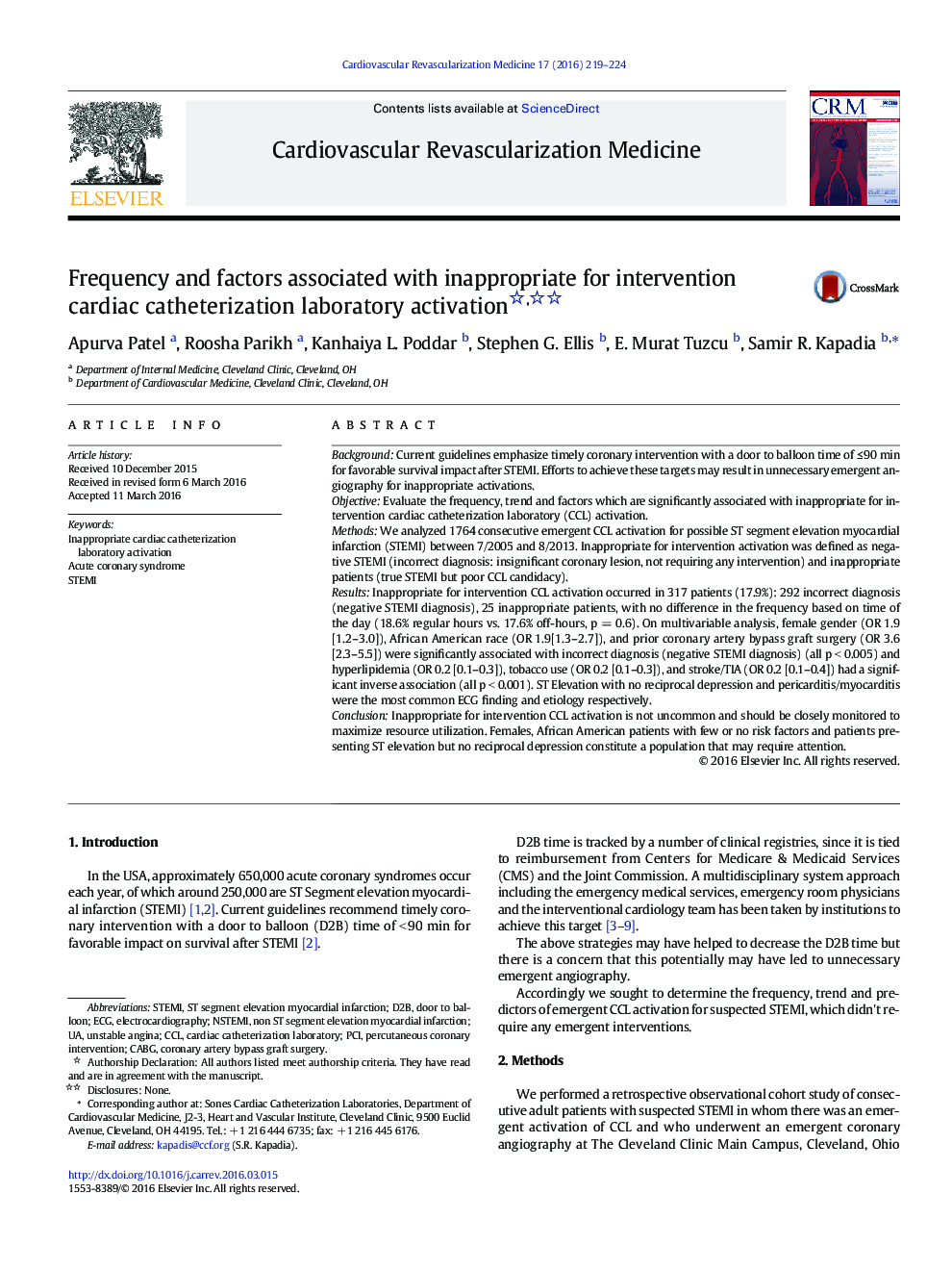| کد مقاله | کد نشریه | سال انتشار | مقاله انگلیسی | نسخه تمام متن |
|---|---|---|---|---|
| 2836896 | 1164865 | 2016 | 6 صفحه PDF | دانلود رایگان |
BackgroundCurrent guidelines emphasize timely coronary intervention with a door to balloon time of ≤ 90 min for favorable survival impact after STEMI. Efforts to achieve these targets may result in unnecessary emergent angiography for inappropriate activations.ObjectiveEvaluate the frequency, trend and factors which are significantly associated with inappropriate for intervention cardiac catheterization laboratory (CCL) activation.MethodsWe analyzed 1764 consecutive emergent CCL activation for possible ST segment elevation myocardial infarction (STEMI) between 7/2005 and 8/2013. Inappropriate for intervention activation was defined as negative STEMI (incorrect diagnosis: insignificant coronary lesion, not requiring any intervention) and inappropriate patients (true STEMI but poor CCL candidacy).ResultsInappropriate for intervention CCL activation occurred in 317 patients (17.9%): 292 incorrect diagnosis (negative STEMI diagnosis), 25 inappropriate patients, with no difference in the frequency based on time of the day (18.6% regular hours vs. 17.6% off-hours, p = 0.6). On multivariable analysis, female gender (OR 1.9 [1.2–3.0]), African American race (OR 1.9[1.3–2.7]), and prior coronary artery bypass graft surgery (OR 3.6 [2.3–5.5]) were significantly associated with incorrect diagnosis (negative STEMI diagnosis) (all p < 0.005) and hyperlipidemia (OR 0.2 [0.1–0.3]), tobacco use (OR 0.2 [0.1–0.3]), and stroke/TIA (OR 0.2 [0.1–0.4]) had a significant inverse association (all p < 0.001). ST Elevation with no reciprocal depression and pericarditis/myocarditis were the most common ECG finding and etiology respectively.ConclusionInappropriate for intervention CCL activation is not uncommon and should be closely monitored to maximize resource utilization. Females, African American patients with few or no risk factors and patients presenting ST elevation but no reciprocal depression constitute a population that may require attention.
Journal: Cardiovascular Revascularization Medicine - Volume 17, Issue 4, June 2016, Pages 219–224
